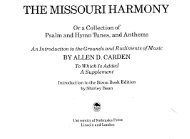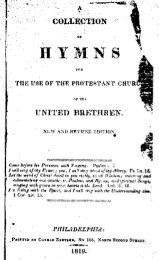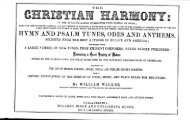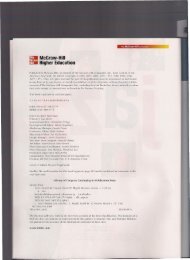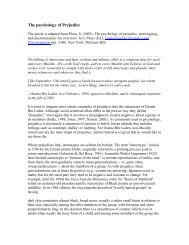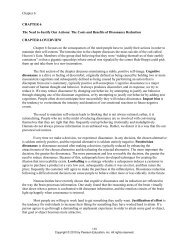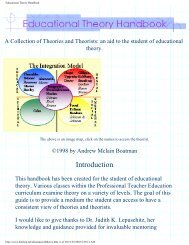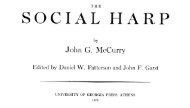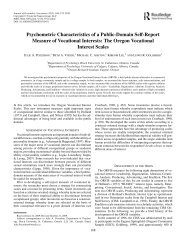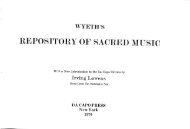Cleavage Structures.pdf
Cleavage Structures.pdf
Cleavage Structures.pdf
You also want an ePaper? Increase the reach of your titles
YUMPU automatically turns print PDFs into web optimized ePapers that Google loves.
40 cLEAvAcE srRucruREs, pARTy sysrEMs, AND vorER ALIGNMENTs<br />
liance-opposition system of type VI: Catholic dominance through the Counter-<br />
Reformation, secularization and religious conflict during the next phase of<br />
nation-building in the nineteenth century, clear predominance of the cities<br />
in national poiitics. But this is an analytical juitaposition of polities with<br />
diametrically opposed histories of development and consolidation-France<br />
one of the oldest and most centralized nation-states in Europe, Italy a territory<br />
unified long after the French revolutions had paved the way for the<br />
"participant nation," the integrated political structure committing the entire<br />
territorial population to the same historical destiny. To us this is not a weakness<br />
in our model, however. The party systems of the countries are curiously<br />
similar, and any scheme of comparative analysis must somehow or other<br />
bring this out. The point is that our distinction between "lation-builder"<br />
alliances and "periphery" alliances must take on very difierent meanings<br />
in the two contexts. In France the distinction between "center" and "periphery"<br />
was far more than a matter of geography; it reflected long-standing<br />
historical commitments for or against the Revolution. As spelt out in detail<br />
in Siegfried's classic Tableau, the Droite had its strongholds in the districts<br />
which had most stubbornly resisted the revolutionary drive for centralization<br />
and equalization,o? but it was far more than a movement of peripheral<br />
protest-it was a broad alliance of alienated elite groups, of frustrated nation-builders<br />
who felt that their rightful powers had been usurped by men<br />
without faith and without roots. In Italy there was no basi! Jor such a broad<br />
alliance against the secular nation-builders, since ihe esta5liJhed local elites offered<br />
little resistance to the lures bf iraiformismo, and the Church kept its<br />
faithful followers out of national politics for nearly two generations.<br />
These contrasts during the lnitial phqsJs,_qf pass -mobiliz?tion had farreaching<br />
consequences for each party system..With the broidCning of the<br />
electorates and the strengthening of the working-class parties, the Church<br />
felt impelled to defend its position tbrough its own resources. In France, the<br />
result was an attempt to divorce the defense of the Catholic schools from<br />
the defense of the established rural hierarchy. This trend had first found<br />
expression through the establishment of Christian trade unions and in 1944<br />
finally led to the formation of the MI{P. The burden of historic commitments<br />
was too strong, however; the young party was unable to establish itself as a<br />
broad mass party defending the principles of Christian democracy. By contrast,<br />
in Italy, history had left the Church with only insignificant rivals to<br />
the right of the working class parties. The result was the formation of a<br />
broad alliance of a variety of interests and movements, frequentiy at loggerheads<br />
with each other, but united in their defense of the rights of the central<br />
institution of the fragmented ancien rdgime, the Roman Catholic Church.<br />
In both cases there was a clear-cut tendency toward religious polarization,<br />
but difierences in the histories of nation-building made for diflerences in the<br />
resultant systems of party alliances and oppositions.<br />
We could go into further detail on every one of the eight types distinguished<br />
in our model, but this would take us too far into single-country<br />
histories. We are less concerned with the specifics of the degrees of fit in each<br />
national case than with the overall structure of the model. There is clearly<br />
nothing final about any such scheme; it simply sets a series of themes for<br />
<strong>Cleavage</strong> <strong>Structures</strong>,Party Systems, andVoter Alignments<br />
detailed comparisons and suggest'. Y/t of organizing the results within<br />
a manageable concept;l.umi"*ort. The model"is a tobl and its utility can<br />
be tested only ttuoufr"o"ti""out development: through the addi'ion of<br />
further variables ,r il""",iJil". -"Ut.*.d' differences als well as through<br />
refinements io tn" a"niil"o*o^;J;r;di"t of .the variables already included'<br />
Two develop-"o,r lio- tne doaet iequire immediate detailed consideration:<br />
(1)Whatvariablesha,vetobeaddedtoaccountfortheformationof<br />
disiinctly territorial Parties?<br />
(2) What criteria:hJld count in differentiatins between N-L and N-U<br />
alliances, and what .onOitionuf variables can be entered into the model to<br />
account for the emergence of expticitly agrartan parties?<br />
Developments and Deviations: Parties for Territorial Defense<br />
Nation-buildinginvariablygeneratesterritorialresistancesandcultural<br />
strains. There will u" .onip.itition between potential centers of<br />
-political<br />
tonlrol; there may #.;;iiil;;i*"* trt" and the areas of growth<br />
"aiital<br />
in the provin."r; u" unavoidable tension. between the cuiturally<br />
^"?"^"""a -u."u,<br />
"nairi."rJ'*iir and the backward periphery..s Some of<br />
;;;"T;;"|#iy<br />
these territoiiat-cuttura] cottnitl' *"'" solved th1-ougfr siceision or boundary<br />
changes, but others *ti" iot"ntified through unifica*tion movements' To take<br />
;-#'3#;;"*uulpr", the dismemberment of the Hapsburg Empirc certaioly<br />
settled a great ou,nt"' of hopelessly entangled conflicti' but it also led<br />
to the politicuf uoin"iiiJ"t'r"itt "rfiurally a"nd economically,heterogeneous<br />
:ilii:_%-il;- v;;ffi ,- unJ cr""t'.,ilovakia. Territorial-cultural conflicts<br />
do not just nio potiiical expression in secessionist and irredentist<br />
movements, ho*.u".1ffi"iil t"it the overall cleavage structure in the<br />
national community J"i'iirp-i9 .o"airiot the developmeit not.only of each<br />
nationwide party organizati6n but even more of the- entire system of party<br />
oonositions and alignments' '<br />
"tfi;-;;;;;;;";;;; the British and the scandinavian Parly systems<br />
stauds out with great clarity in o-ur-.steP-by-step accounting schcmc' The<br />
countrics of Nortn*Jst Effie had all-oited for'national religious solutions<br />
at the time'of the n"r*o,"iion, but the^y nevertheless developed markedly<br />
difierent purry ,yrr",i-J^a"uti;g th; larly ph'ases of democratization and mobilization-<br />
'frri, .orrt.ur,- io -p"oriti"al development clearly did not reflect a<br />
difierence in ttre saiien; Ji;;t i;"g1" li"" of 1|eavage-but^a difference in<br />
lbe ioint operation oi two s"ti of "cleavages: the opposition between tlre<br />
central nation_buildioi "ortur" and the truEitiont of fhs periphery, and the<br />
opposition u"t*""o'iti"lri*ury and the secondary scctors of the economy'<br />
rn Britain tt" ""oirui'..ii'*-iu"r upheld and reinforccd by a vast network<br />
of landed tarruhesf in the Nordic c6untries by an.essenltally urban elite of<br />
officials and patricians' in Britain the two cleavagg lile; cur ac'ross each other:<br />
in Scandinav * tn"y"ilt"1r*"J*u.ft otfter' The"British structure encouraged<br />
a gradual merger ]r'"ril',"" "ra-r,rrul iot"."sts, while the scandinavian madt<br />
for division ""d ;;Giln.6s The British conservative Party was .191"..1,<br />
establish a joint frf";";i i;"aeJ and industrial owner interests, whiic tht<br />
,i l-Lt-LLLLLLLLI-ttLLLLrl.r I Lr l r ! l tll [l.l.-lJ-t t r<br />
41



